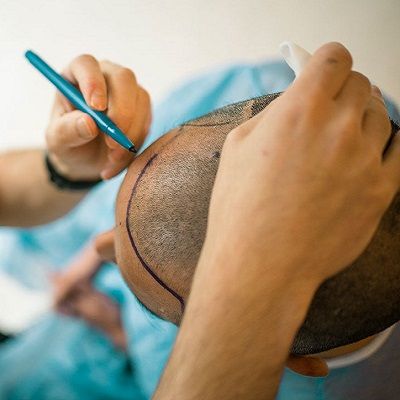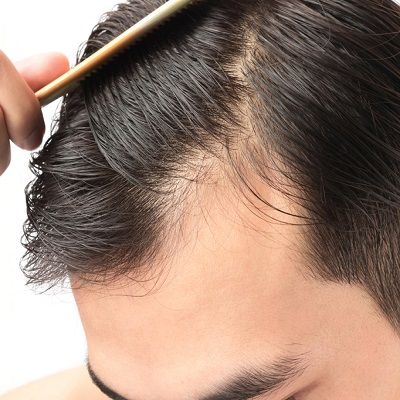
The hair follicle, hair shaft, sebaceous glands, and hair bulb are all components of hair. Cycles accompany the complicated process of hair development. The hair follicle, which is present under the skin’s surface, is essential for hair development. The visible portion of hair that protrudes past the skin is a hair shaft. Hair health can also be affected by outside influences. Lack of certain vitamins and minerals, in particular, can damage hair follicles and cause hair loss. Hair thinning and breakage can be brought on by excessive hairstyling techniques such as overusing hot styling tools, chemical treatments, or tight hairstyles.
Additionally, physical or mental stress, resulting in temporary hair loss can mess up the hair development cycle. Therefore, people opt for hair transplants but they do not have any idea about When is the Best Time for Hair Transplant Age-Wise.
What is a Hair Transplant?
A surgical technique called a Hair Transplant in Dubai helps to cure baldness or hair loss. It entails taking healthy hair follicles from one region of the body, usually, the sides or back of the scalp, known as the donor area, and transplanting them to another location, known as the recipient area, where hair is thinning or falling out.
The majority of hair transplant surgeries are done as outpatient operations under local anesthesia. The hormone dihydrotestosterone (DHT), which causes hair loss in people with androgenetic alopecia, is not able to affect the transplanted hair follicles. Therefore, it anticipates that the transplanted hair will grow and stay in the recipient location permanently.
Procedure:
Before initiating the procedure, the doctor arranges a consultation to examine your past medical history and your current health condition. This consultation helps to rule out a different condition that can cause an interruption in the procedure. Moreover, it also helps to make the procedure produce more reliable results.
- The doctor first assesses the donor and recipient area of the individual.
- He then cleanses the donor region and generally involves the sides or rear of the head. Afterward, he will carefully remove the strip of skin from the donor location if you choose the FUT procedure. Individual hair follicles removed from your FUE utilize special equipment.
- Subsequently the hair follicles for transplantation in both FUT and FUE. Under a microscope, this entails dividing them into distinct follicular units or grafts. The size, quality, and appropriateness of the grafts for certain parts of the recipient site are typically taken into account while sorting them.
- Administers local anesthesia to the recipient area to reduce the discomfort and pain during the transplantation of the follicles.
- Depending on the angle, direction, and density of your current hair, the physician makes minute cuts or incisions in the recipient region. To produce a natural-looking outcome, these incisions’ size and direction are essential.
- Insert the prepared grafts meticulously in the recipient area. He uses forceps or specialized implantation equipment to insert the graft.
Best Time for Hair Transplant Age-Wise:
The ideal timing for a hair transplant might depend in part on age. There is no set age for hair transplants, however, the physician often advises holding off until the early to mid-20s when the hair loss pattern becomes more regular. This makes it possible to determine Hair Loss severity and prospective long-term hair restoration requirements with greater accuracy. However, there is no specific age for hair transplants.
Aftercare:
The aftercare measures after having this procedure are important to follow. Since this procedure is minimally invasive, therefore, the doctor advises following post-operative care very carefully.
- Keep the transplanted area dry and clean.
- To avoid damaging the transplanted region, refrain from rubbing or scratching it.
- Take antibiotics and painkillers exactly as he recommends.
- Avoid doing things that can pull or strain the newly transplanted hair.
- To reduce swelling, raise your head on pillows as you sleep.
- Avoid harsh heat or sunshine on the transplanted region.
- Avoid physically demanding activities or those that make you sweat a lot.
Hair Transplant Benefits:
The benefits of a hair transplant are:
- Restoration of hair permanently.
- Effects that appear natural.
- Increase self-assurance.
- Less downtime.
- There is no continuing upkeep.
- There are no apparent scars.
- Restoring the Hairline.
- Development of hair on its own.
- Cost-efficient procedure
Book A Consultation!
Our clinic in Dubai offers the hair transplant procedure but people still face a dilemma When is the Best Time for Hair Transplant Age-Wise? Our doctors are well-qualified and they are compatible enough to clear all your concerns and provide you with the best outcomes. Therefore, if you want to get a consultation fill out the consultation form below.











